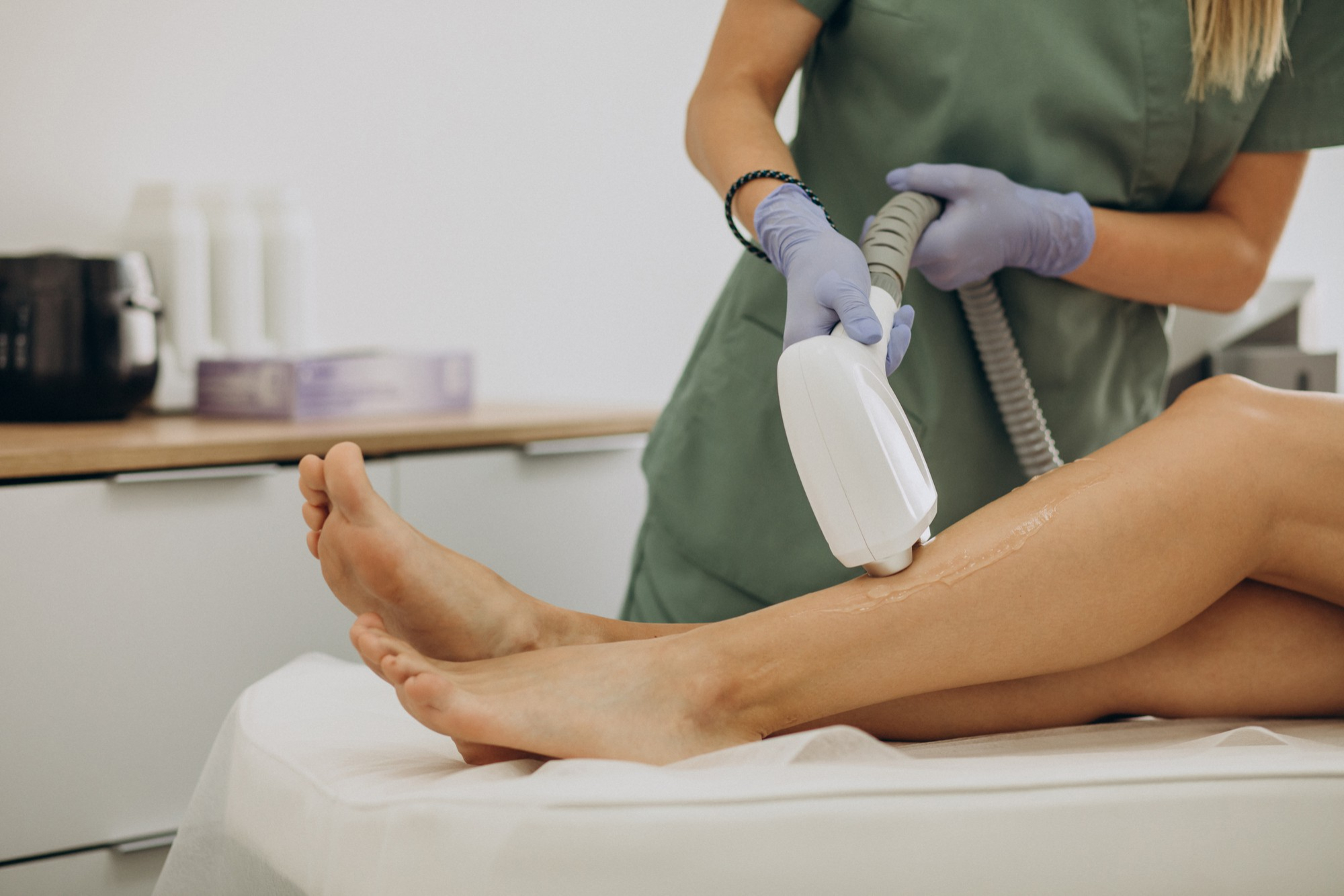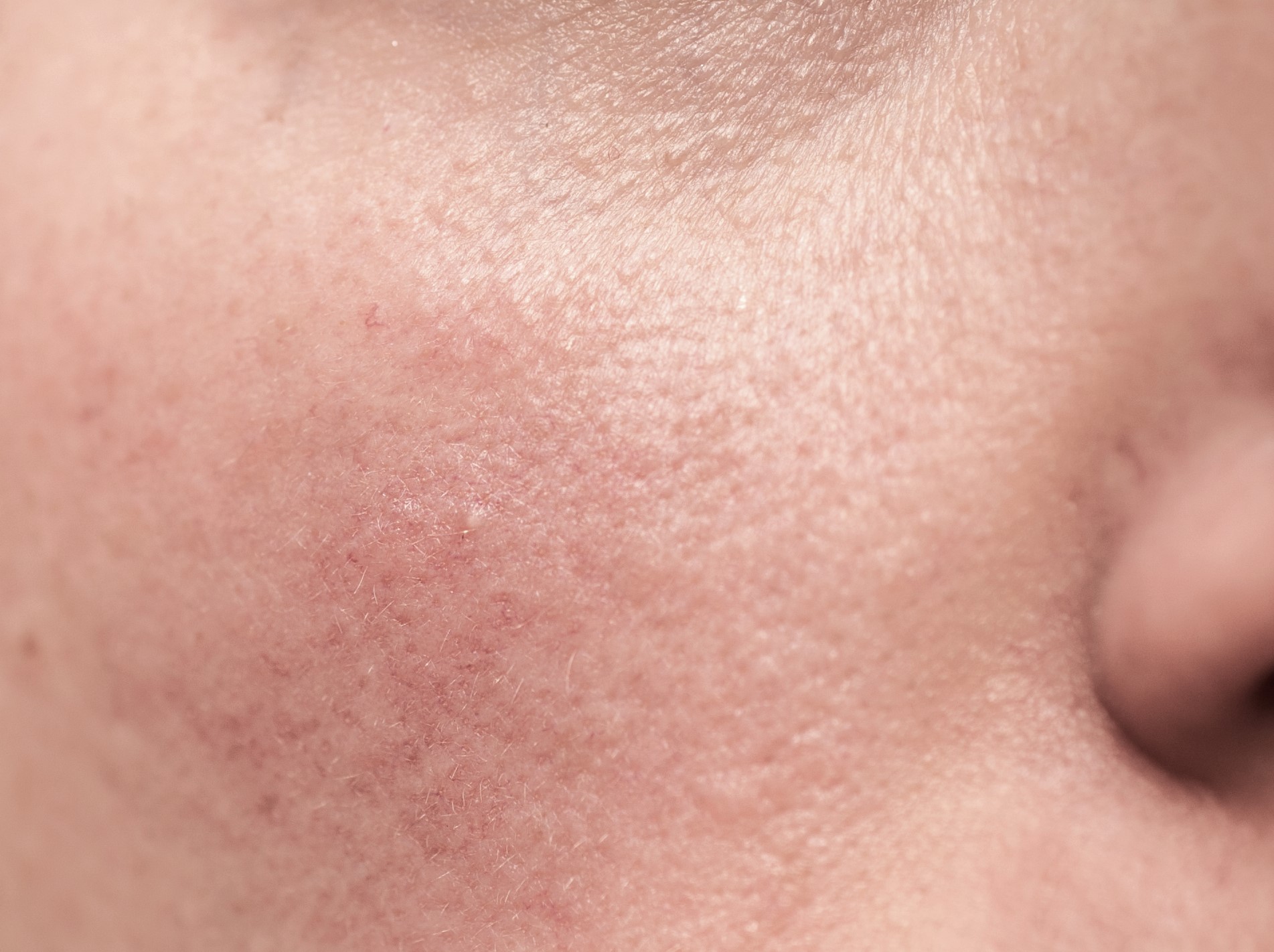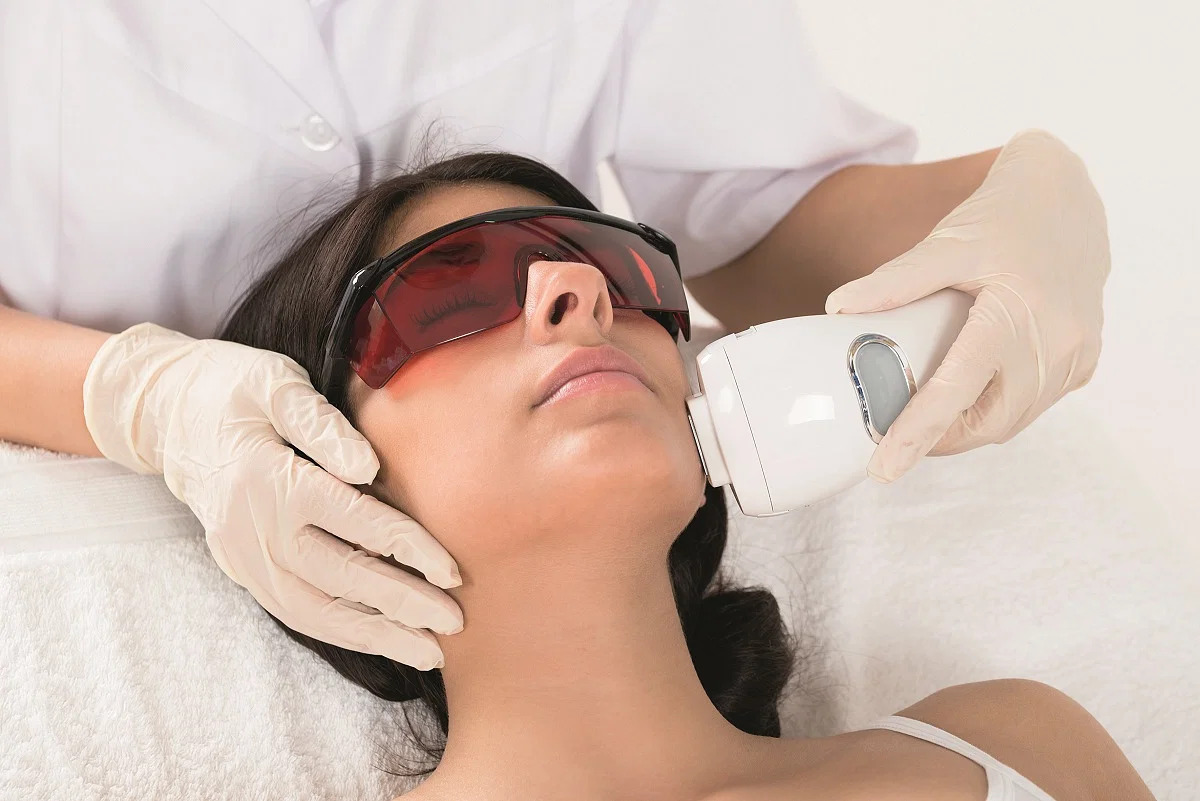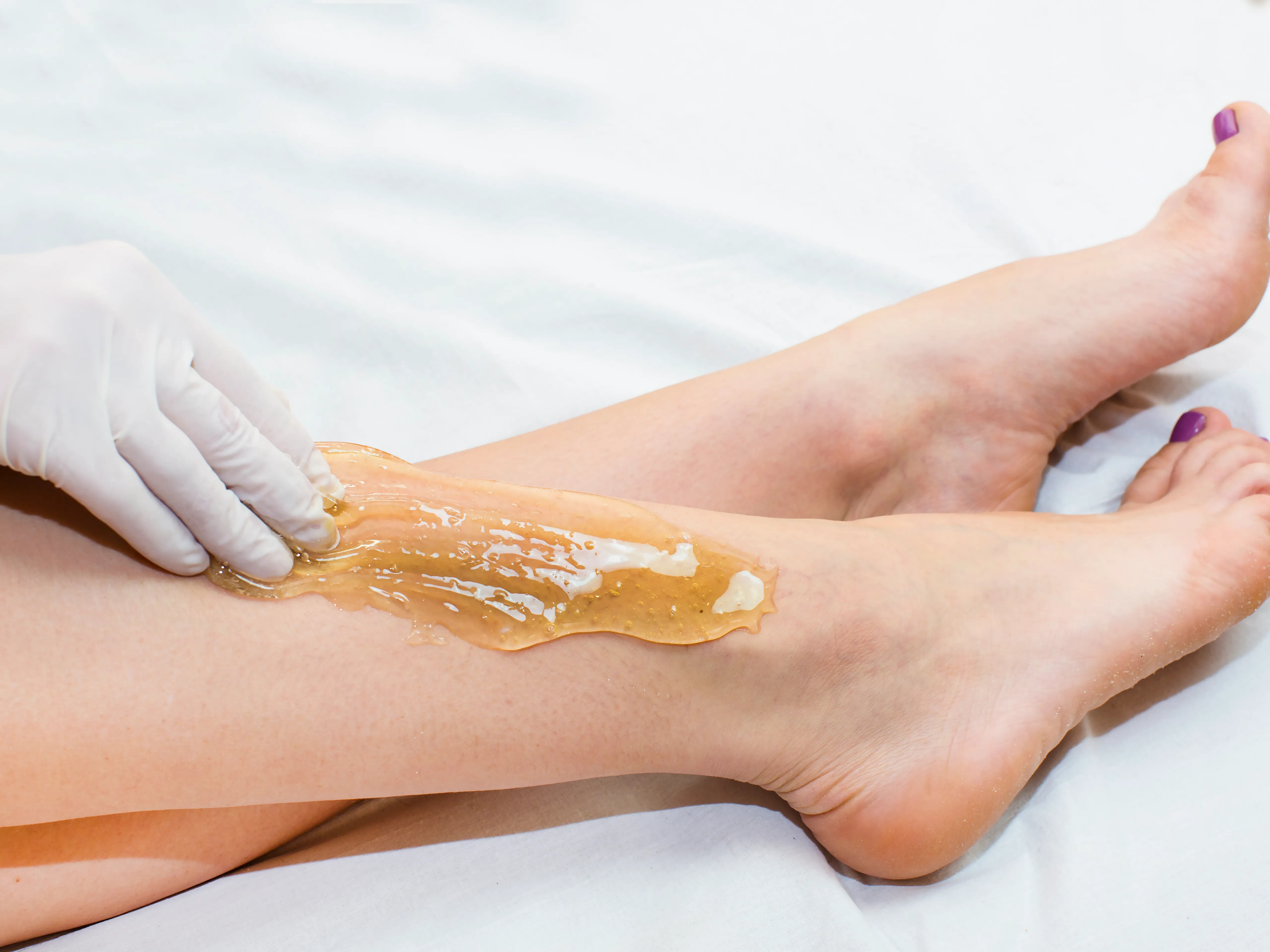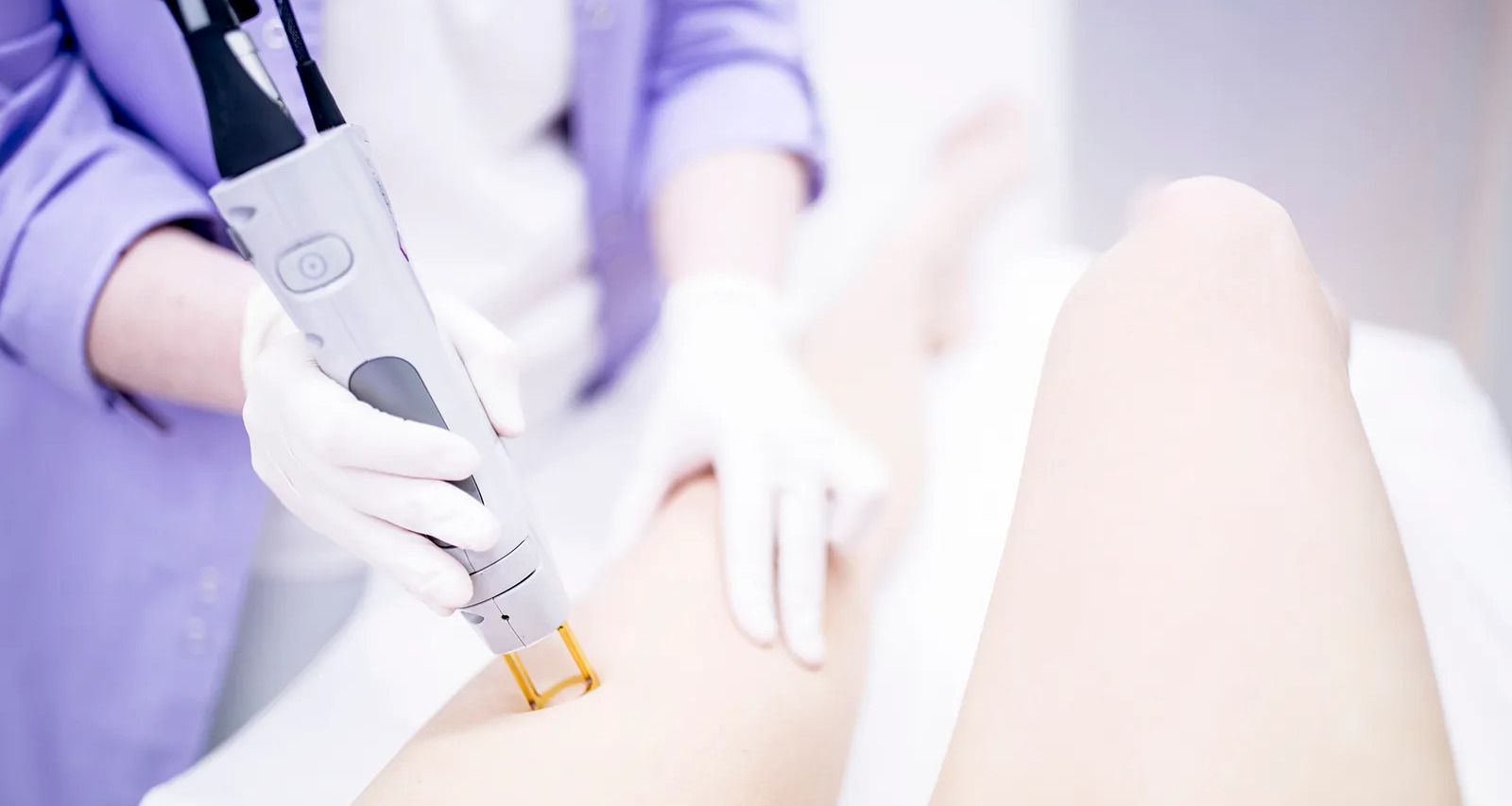

FAQs
What Is A Laser Hair Removal
Modified: September 23, 2023
Looking for answers to general questions about laser hair removal? Find out what laser hair removal is and how it works here.
(Many of the links in this article redirect to a specific reviewed product. Your purchase of these products through affiliate links helps to generate commission for Under-tec.com, at no extra cost. Learn more)
Table of Contents
Introduction
Laser hair removal has become an increasingly popular option for individuals who want to say goodbye to unwanted body hair. This non-invasive procedure offers a long-term solution by targeting hair follicles with laser energy, inhibiting future hair growth. With its effectiveness and convenience, laser hair removal has gained traction as a safe and efficient method for achieving smooth, hair-free skin.
Unwanted body hair can be a source of frustration and self-consciousness for many people. Traditional hair removal methods like shaving, waxing, and plucking are temporary and often time-consuming, leading individuals to seek a more permanent solution. This is where laser hair removal comes into play.
Unlike other hair removal methods, laser hair removal targets the hair follicles beneath the skin’s surface. The procedure involves the use of a laser that emits concentrated light energy, which is absorbed by the pigment in the hair follicles. This heat energy is then transformed into heat, damaging the follicles and preventing future hair growth.
Who can benefit from laser hair removal? The great news is that almost anyone can be a candidate for this procedure. Both men and women of all skin types and hair colors can achieve successful results. However, individuals with darker hair and lighter skin tend to respond best to laser hair removal due to the contrast between their hair color and skin tone.
Laser hair removal offers numerous benefits over traditional hair removal methods. Firstly, it provides long-term results, with many individuals experiencing permanent hair reduction after several sessions. Secondly, it is a time-efficient process since multiple hair follicles can be targeted simultaneously. Additionally, laser hair removal can be used to treat hair on various areas of the body, including the legs, arms, underarms, bikini area, face, and back.
While laser hair removal offers many advantages, it is essential to be aware of potential side effects. These can include temporary skin redness, slight swelling, and mild discomfort during the procedure. However, these effects are typically mild and subside within a few hours or days.
Before undergoing laser hair removal, there are a few preparations to consider. It is advised to avoid sun exposure and tanning beds to minimize the risk of complications and ensure the effectiveness of the treatment. Additionally, it is recommended to discontinue any hair removal methods such as plucking, waxing, or electrolysis leading up to the procedure.
In the following sections of this article, we will delve deeper into how laser hair removal works, what to expect during and after the procedure, and the average number of sessions required for optimal results. We will also discuss the costs associated with laser hair removal and provide some valuable tips for a successful treatment.
How does laser hair removal work?
Laser hair removal works by targeting the hair follicles with concentrated beams of laser energy. The pigment in the hair follicles absorbs the laser light, which is then converted into heat. This heat damages the follicles, disrupting their ability to produce new hair.
The process begins with the technician using a handheld laser device that emits a specific wavelength of light. The wavelength of the laser can be adjusted to suit different hair colors and skin types. The technician will adjust the settings based on the individual’s unique characteristics to ensure optimal results.
As the laser is directed onto the skin, it is absorbed by the melanin in the hair follicles. Melanin is the dark pigment that gives hair its color. The laser energy heats up the follicle, damaging its structure and inhibiting future hair growth.
It’s important to note that laser hair removal is most effective on hair that is in the active growth phase, known as the anagen phase. Not all hair follicles are actively growing at the same time, which is why multiple treatment sessions are necessary to target all the hair follicles in the desired area.
The length and number of sessions required for optimal results will vary depending on factors such as the individual’s hair color, skin type, and the area being treated. Typically, multiple sessions spaced several weeks apart are necessary to target hair follicles in different growth phases.
It’s worth mentioning that laser hair removal is generally well-tolerated, although some individuals may experience mild discomfort during the procedure. Many clinics offer options for numbing creams or cooling technologies to enhance patient comfort.
While laser hair removal provides long-term results, it’s important to note that it may not result in permanent hair removal in all cases. Some individuals may experience hair regrowth, although it is often lighter and finer in texture than before. Maintenance sessions may be required to ensure long-lasting results.
In the next section, we will discuss the ideal candidates for laser hair removal and the benefits it offers over other hair removal methods.
Who is a good candidate for laser hair removal?
Laser hair removal is a versatile treatment that can be suitable for a wide range of people. Both men and women of various skin types and hair colors can benefit from this procedure. However, certain factors can influence the effectiveness and safety of laser hair removal.
Individuals with darker hair and lighter skin tend to be ideal candidates for laser hair removal. The contrast between the dark hair and light skin allows the laser to target the hair follicles more effectively. However, advancements in laser technology have made it possible for individuals with darker skin tones to undergo laser hair removal safely, though certain precautions may be necessary.
It’s important to note that laser hair removal is not effective on grey or blonde hair as these hair colors have low melanin content, which is essential for the laser to efficiently target the follicles.
Understanding the growth cycle of hair is also crucial when considering laser hair removal. The procedure is most effective on hair that is actively growing, which is known as the anagen phase. Since not all hair follicles are in this phase simultaneously, multiple treatment sessions are needed to achieve optimal results.
Another important consideration is the overall health of the individual. Certain medical conditions or medications may impact the suitability of laser hair removal. It is vital to disclose any medical conditions and medications to the technician before undergoing the procedure to ensure its safety and effectiveness.
Pregnant women are generally advised to avoid laser hair removal as a precautionary measure, although there is no direct evidence indicating harm to the fetus. It is always best to consult with a healthcare provider to assess any potential risks.
Laser hair removal can be performed on various areas of the body, including the legs, arms, underarms, bikini area, face, back, and chest. It is a versatile treatment that can be customized to address individual needs and preferences.
It’s important to have realistic expectations when considering laser hair removal. While it provides long-term results, it may not permanently remove all hair. Some individuals may require maintenance sessions to manage occasional regrowth.
Before undergoing laser hair removal, it is recommended to consult with a qualified technician or dermatologist. They can assess your eligibility for the procedure and provide personalized recommendations based on your unique characteristics.
In the following sections, we will explore the benefits of laser hair removal and discuss the potential side effects associated with the treatment.
Benefits of laser hair removal
Laser hair removal offers numerous benefits compared to traditional methods of hair removal. Here are some of the key advantages of opting for laser hair removal:
- Long-term results: Unlike temporary hair removal methods such as shaving or waxing, laser hair removal provides long-lasting results. With multiple treatment sessions, many individuals experience a significant reduction in hair growth that can be maintained for months or even years.
- Time-saving: Laser hair removal is a time-efficient procedure. Unlike other methods that require frequent upkeep, laser treatment targets multiple hair follicles simultaneously. This allows for larger areas to be treated in a relatively short amount of time.
- Precision and effectiveness: Laser technology allows for precise targeting of hair follicles without damaging the surrounding skin. The laser can be adjusted to match the specific hair color and skin tone, ensuring effective treatment for a wide range of individuals.
- Reduced ingrown hairs: One of the benefits of laser hair removal is the reduction of ingrown hairs. Ingrown hairs can be painful and unsightly, but laser treatment can help eliminate them by targeting the hair follicles and preventing them from growing back.
- Minimal discomfort: While everyone’s pain tolerance is different, most individuals find laser hair removal to be relatively painless. The sensation is often described as a mild stinging or snapping feeling. Some clinics offer numbing creams or cooling technologies to further enhance patient comfort during the procedure.
- Improved confidence and convenience: Laser hair removal can significantly boost self-confidence by eliminating the need to constantly shave, wax, or pluck unwanted hair. It provides individuals with smooth, hair-free skin, making it a convenient choice for those who want to simplify their grooming routine.
- Versatility: Laser hair removal can be performed on various body areas, including the legs, arms, underarms, bikini area, face, back, and chest. It offers a versatile solution for individuals looking to remove hair from multiple parts of their body.
It’s important to note that the benefits of laser hair removal can vary from person to person. Factors such as individual hair growth patterns, skin type, and hair color can influence the effectiveness of the treatment. Consulting with a qualified technician or dermatologist is crucial to determine the expected outcomes and set realistic expectations.
In the next section, we will discuss the potential side effects associated with laser hair removal and how to prepare for the procedure.
Potential side effects
While laser hair removal is generally considered safe and well-tolerated, there are potential side effects that individuals should be aware of before undergoing the procedure. It’s important to note that side effects can vary depending on factors such as individual skin type, hair color, and the area being treated.
One common side effect of laser hair removal is temporary skin redness and mild irritation. This is typically a result of the heat generated by the laser and usually subsides within a few hours to a few days after treatment. Applying a soothing cream or cold compress can help alleviate any discomfort or redness.
Slight swelling may occur in the treated areas, particularly in more sensitive areas of the body. This swelling is usually temporary and should resolve on its own within a few hours or days. Avoiding hot showers, saunas, or strenuous exercise immediately after the treatment can help minimize swelling.
In some cases, individuals may experience a sensation of mild discomfort or a slight stinging feeling during the procedure. While pain tolerance varies from person to person, most individuals find the discomfort to be manageable. However, if the pain becomes too intense, it is important to communicate with the technician, who can make adjustments to the laser settings or offer alternative pain relief options.
Skin color changes, such as lightening or darkening of the treated area, may occur. This is usually temporary and resolves on its own within a few weeks or months. However, individuals with darker skin tones may be more prone to pigmentation changes and should consult with a qualified technician or dermatologist before undergoing laser hair removal.
In rare cases, blistering or crusting of the skin may occur. This is more likely to happen if the treated area is not properly cared for after the procedure. It is important to follow the aftercare instructions provided by the technician to minimize the risk of complications.
It’s worth mentioning that the potential side effects of laser hair removal are typically mild and resolve on their own without any long-term consequences. However, it is essential to choose a reputable clinic with qualified technicians to ensure a safe and effective treatment experience.
In the following section, we will discuss how to prepare for laser hair removal and what to expect during and after the procedure.
Preparing for laser hair removal
Preparing properly before your laser hair removal session can help maximize the effectiveness of the treatment and minimize potential side effects. Here are some tips to help you prepare:
- Avoid sun exposure: It’s important to avoid sun exposure and tanning beds leading up to your laser hair removal appointment. Sunburned skin is more sensitive and can increase the risk of complications and adverse reactions to the treatment. If sun exposure is unavoidable, be sure to apply a broad-spectrum sunscreen with a high SPF to the treated areas.
- Avoid other hair removal methods: In the weeks leading up to your laser hair removal session, it is recommended to avoid plucking, waxing, or electrolysis. These methods remove the hair from the follicle, which is necessary for the laser to target effectively. Shaving, on the other hand, is allowed and even encouraged prior to the procedure to ensure that the laser energy is focused on the follicles beneath the skin’s surface.
- Trim your hair: Before your scheduled session, it’s a good idea to trim the hair in the treatment area to a short length. This allows the laser to better target the hair follicles and minimize discomfort during the procedure.
- Cleanse your skin: On the day of your appointment, make sure to thoroughly clean the treatment area and remove any lotions, creams, or oils. Clean, dry skin allows for better laser penetration and optimal results.
- Communicate your medical history: During your consultation, it is important to inform the technician or dermatologist about any medical conditions, medications you are currently taking, or previous skin treatments you have undergone. This will help them assess your eligibility for laser hair removal and adjust the treatment plan if necessary.
- Follow pre-procedure instructions: Your technician will provide you with specific instructions to follow before your laser hair removal session. These may include avoiding caffeine, certain medications, or other substances that can increase sensitivity or interfere with the laser’s effectiveness. It’s important to carefully follow these instructions to ensure the best possible outcome.
Preparing for your laser hair removal session can help optimize treatment results and enhance your overall experience. By following these guidelines, you can minimize the risk of complications and ensure that the procedure is as effective as possible.
In the next section, we will discuss what to expect during the laser hair removal procedure and the aftercare and recovery process.
What to expect during the procedure
Knowing what to expect during a laser hair removal procedure can help alleviate any anxiety and ensure a smooth treatment experience. While the specifics may vary depending on the clinic and the area being treated, here is a general outline of what you can expect:
- Consultation: Before the procedure begins, you will likely have a consultation with a technician or dermatologist. They will assess your eligibility for laser hair removal, discuss your goals and expectations, and address any questions or concerns you may have.
- Preparation: Once you are ready for the treatment to begin, the technician will prepare the treatment area by cleaning it and applying a cooling gel or numbing cream if necessary. Protective eyewear will also be provided to shield your eyes from the laser.
- Laser treatment: During the laser hair removal procedure, the technician will use a handheld device that emits laser energy. They will gently glide the device over the treatment area, pulsing the laser beams onto the hair follicles. You may feel a slight stinging or snapping sensation as the laser targets the follicles, but this discomfort is generally tolerable for most individuals.
- Safety measures: Throughout the procedure, the technician will take precautions to ensure your safety. They will adjust the laser settings based on your specific hair and skin characteristics, ensuring that the treatment is optimized for your needs. They may also cool the skin between pulses to minimize any potential discomfort or heat sensation.
- Duration: The length of a laser hair removal session can vary depending on factors like the size of the treatment area and the density of hair. Smaller areas, such as the upper lip or underarms, may only take a few minutes, while larger areas like the legs or back can take up to an hour.
- Number of sessions: Laser hair removal is typically done in a series of sessions to target hair follicles in various growth stages. The number of sessions required will depend on several factors, including your hair type, skin type, and the area being treated. On average, most individuals require around 6-8 sessions spaced several weeks apart for optimal results.
- Aftercare: Once the laser hair removal procedure is complete, the technician will provide you with aftercare instructions. This may include avoiding sun exposure, applying soothing creams or lotions to the treated area, and avoiding strenuous physical activity for a certain period. Following these instructions carefully will help minimize any potential side effects and ensure a smooth recovery.
It’s important to note that the specifics of your laser hair removal procedure may differ based on the clinic and the expertise of the technician. Consulting with a qualified professional beforehand will provide you with a more accurate understanding of what to expect during your treatment sessions.
In the next section, we will discuss aftercare and recovery following laser hair removal.
Aftercare and recovery
After undergoing a laser hair removal procedure, proper aftercare is essential to promote optimal healing and ensure the best possible results. Here are some key points to keep in mind during the aftercare and recovery process:
- Avoid sun exposure: It is crucial to protect the treated area from sun exposure for several weeks after the procedure. UV rays can increase the risk of complications and interfere with the healing process. If sun exposure is unavoidable, be sure to apply a broad-spectrum sunscreen with a high SPF to the treated area.
- Keep the area clean and dry: It’s important to keep the treated area clean and dry to prevent infection. Avoid using harsh soaps or scrubs on the area and gently pat dry with a clean towel after showering or bathing.
- Avoid irritants and avoid scratching: Fragrances, lotions, and other potential irritants should be avoided on the treated area. It is also important to resist the urge to scratch or pick at the skin, as this can disrupt the healing process and increase the risk of infection.
- Moisturize the skin: Applying a gentle moisturizer to the treated area can help soothe the skin and alleviate any dryness or irritation. Look for a fragrance-free, hypoallergenic moisturizer recommended by your technician or dermatologist.
- Avoid heat and excessive sweating: It’s important to avoid activities that generate heat and excessive sweating, such as saunas, hot tubs, and intense workouts, for a few days following the procedure. Heat and sweat can irritate the treated skin and increase the risk of complications.
- Do not pluck or wax: During the recovery period, it’s important to avoid plucking, waxing, or using any other hair removal methods that remove the hair from the follicle. Let the hair fall out naturally as the damaged follicles shed.
- Stay hydrated and maintain a healthy lifestyle: Drinking plenty of water and maintaining a healthy lifestyle can contribute to the overall healing process. Staying hydrated and following a balanced diet can help support the skin’s recovery.
- Follow up with scheduled sessions: To achieve the best results, it’s crucial to follow up with the recommended number of laser hair removal sessions as advised by your technician or dermatologist. This will ensure that all hair follicles are treated and prevent regrowth.
If you experience any ongoing discomfort, excessive redness, swelling, or signs of infection, it is important to contact your technician or dermatologist immediately. They can assess the situation and provide appropriate guidance or treatment if needed.
By following these aftercare guidelines, you can help promote a smooth recovery and optimize the results of your laser hair removal treatment.
In the next section, we will discuss the average number of sessions required for laser hair removal and the associated costs.
How many sessions are needed?
The number of laser hair removal sessions required for optimal results can vary depending on various factors, including the individual’s hair type, skin type, and the area being treated. While some individuals may notice a significant reduction in hair growth after just a few sessions, others may require more sessions to achieve their desired outcome.
The hair growth cycle plays a critical role in determining the necessary number of sessions. Laser hair removal is most effective during the anagen phase, which is the active growth phase of the hair follicle. Not all hair follicles are in the anagen phase simultaneously, which is why multiple sessions are usually required to target all the hair follicles in the treatment area.
On average, most individuals require around 6 to 8 sessions of laser hair removal. These sessions are typically scheduled several weeks apart to ensure that the hair follicles in different growth phases are targeted. However, the exact number of sessions needed can vary from person to person.
Factors such as the density of hair, the area being treated, and individual response to the treatment can influence the number of sessions required. For example, areas with thicker hair, such as the bikini area or the legs, may require more sessions compared to areas with finer hair, such as the upper lip or arms.
It’s important to note that laser hair removal provides long-lasting results but may not result in permanent hair removal in all cases. Some individuals may experience occasional regrowth, although the hair is often lighter and finer in texture. These individuals may need maintenance sessions to manage any new hair growth.
During the initial consultation, your technician or dermatologist will assess your hair and skin characteristics, discuss your goals, and provide you with a personalized treatment plan. They will give you a rough estimate of the number of sessions you may need based on their expertise and experience. However, it’s important to remember that individual responses can vary, and the exact number of sessions required may differ from the initial estimate.
By following the recommended treatment plan and attending all scheduled sessions, you can maximize the effectiveness of laser hair removal and achieve long-lasting results.
In the next section, we will discuss the cost considerations associated with laser hair removal.
Cost of laser hair removal
The cost of laser hair removal can vary depending on several factors, including the area being treated, the geographical location of the clinic, and the expertise of the technicians. The price is typically calculated either per session or as a package deal for multiple sessions.
The cost of laser hair removal is influenced by the size of the treatment area. Larger areas such as the legs or back tend to be more expensive than smaller areas like the upper lip or underarms. The complexity of the procedure and the time required for treatment can also affect the cost.
The number of sessions needed for optimal results also impacts the overall cost. On average, most individuals require around 6 to 8 sessions. Some clinics offer package deals that include a set number of sessions at a discounted price. Purchasing a package may be more cost-effective in the long run compared to paying for individual sessions.
Geographical location can play a role in the cost of laser hair removal as well. Clinics in major cities or areas with a higher cost of living may have higher prices compared to those in more rural areas. It’s always a good idea to research and compare prices in your local area before making a decision.
It’s important to note that the cost of laser hair removal can vary from person to person based on their unique needs and treatment plan. The best way to get an accurate estimate of the cost is to schedule a consultation with a reputable clinic. During the consultation, they will assess your specific situation, recommend a treatment plan, and provide you with a detailed cost breakdown.
In addition to the cost of the procedure itself, it’s essential to consider any additional expenses such as consultation fees, aftercare products, and potential touch-up sessions in the future.
While laser hair removal may seem like a significant investment upfront, it is essential to remember the long-term benefits it offers. With permanent or long-lasting hair reduction, there is potential for substantial savings in the long run compared to frequent waxing, shaving, or other temporary hair removal methods.
It’s crucial to prioritize quality and safety when considering laser hair removal. It’s recommended to choose a reputable clinic with experienced technicians and modern laser technology. Choosing a qualified professional may come with a higher cost, but it ensures a higher chance of achieving desired results and reduces the risk of complications.
In the next section, we will provide a brief summary of the key points discussed in this article.
Conclusion
Laser hair removal has revolutionized the way we approach long-term hair removal. It provides a safe, effective, and convenient solution for individuals who are tired of relying on temporary hair removal methods. By targeting the hair follicles with laser energy, laser hair removal inhibits future hair growth and provides long-lasting results.
Almost anyone can benefit from laser hair removal, with individuals of various skin types and hair colors being suitable candidates. While it is most effective on darker hair and lighter skin, advancements in laser technology have made it possible for individuals with darker skin tones to undergo the procedure safely.
The benefits of laser hair removal are numerous. It offers long-term results, saving individuals time and effort in the long run. It can be performed on various areas of the body and helps reduce the occurrence of ingrown hairs, boosting confidence and convenience.
While laser hair removal is generally safe and well-tolerated, it’s important to be aware of potential side effects such as temporary skin redness, slight swelling, and mild discomfort. These side effects are usually mild and subside within a few hours or days.
Proper preparation before the procedure, followed by appropriate aftercare, is crucial for the best outcomes. Sun avoidance, discontinuing hair removal methods, and maintaining good skin hygiene are essential steps to follow.
The number of sessions required for laser hair removal can vary depending on factors such as hair and skin characteristics, with most individuals typically needing 6 to 8 sessions. Pricing for laser hair removal can depend on factors such as treatment area size and geographical location.
Ultimately, laser hair removal is a valuable investment in achieving smooth, hair-free skin. It provides freedom from the constant need for temporary hair removal methods, making it an attractive option for those seeking a long-term solution.
When considering laser hair removal, it is crucial to consult with a qualified technician or dermatologist who can assess your eligibility, provide personalized recommendations, and ensure your safety throughout the treatment process.
With proper understanding, preparation, and aftercare, laser hair removal can be an effective and life-changing procedure, offering a more permanent solution to unwanted body hair.

